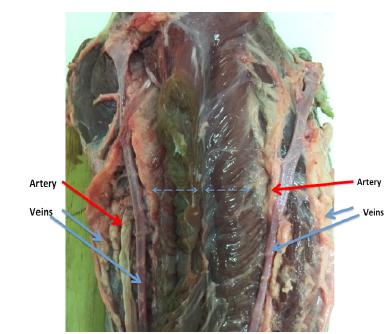Abstract
Purpose:
To introduce a nonliving microvascular training model based on vessels diameter and feasibility.
Methods:
We dissected ten oxen tongues, and divided the pedicles into three-thirds: proximal, middle and distal. We measured the external vessels diameter in all regions. We performed a descriptive statistical analysis. Three students (two beginner level and one intermediate level) performed this training. We evaluated the confidence, according Likert scale.
Results:
We dissected all oxen tongues, each tongue showed two parallel pedicles. Each pedicle was located at 1.5 - 2.0 cm from the midline. Proximal median artery and vein diameter were 3.9 ± 0.7, and 5.04 ± 1.44mm, respectively. In the middle third, the mean artery diameter was 3.3 ± 0.4mm, and the vein diameter was 3.5 ± 0.9mm. The distal third showed a mean artery diameter of 2.0 ± 0.42mm, and a vein diameter of 2.4 ± 0.82mm. The students performed ten anastomoses. This study showed a higher confidence level (CL) (p=0.03) than the pre training CL assessment.
Conclusion:
This study suggested a feasible non-animal model for microsurgical training process for beginners and intermediate trainees.
Key words:
Microsurgery; Education; Ethics.


